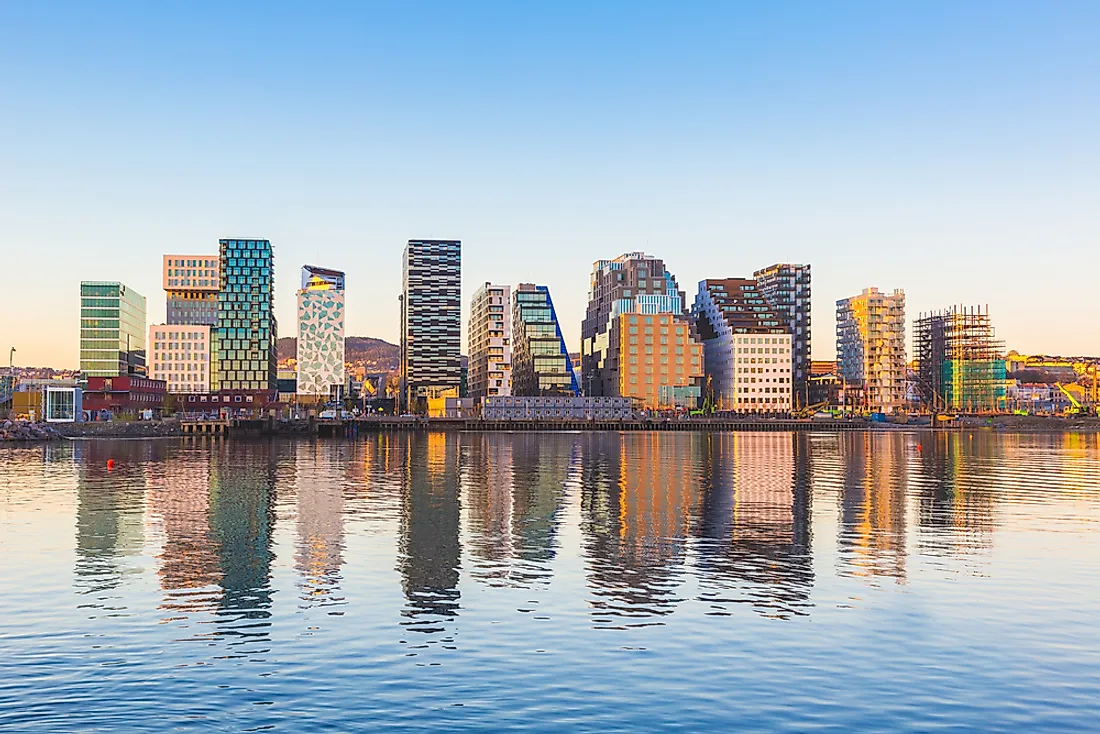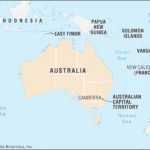Get ready to explore Oslo, Norway’s beautiful capital that’s got it all! From its storied past as the Old Town of Oslo to its vibrant present as a hub for the arts, Oslo is a city that’s constantly evolving. It’s a place where you can wander through history in the charming Old Town or admire stunning modern architecture. And let’s not forget the friendly locals who add to Oslo’s welcoming atmosphere. Let’s dive into the heart of this enchanting city and uncover all its secret gems!
What is the Capital of Norway?
If you’re picturing majestic fjords and Viking legends, you’re on the right track! Norway, the land of the midnight sun, boasts a capital that’s just as captivating: Oslo.
Oslo isn’t just a dot on the map; it’s the beating heart of Norway. As the country’s largest city, it pulsates with life, encompassing politics, economics, and a vibrant cultural scene.
A City Steeped in History
Oslo’s story is a long and winding one, echoing through the ages. It wasn’t always known by its current name. Originally called Christiania, the city underwent a significant name change, reflecting its evolving identity. This rich history has shaped Oslo into the dynamic city it is today.
Oslo: Where Money Talks and Culture Sings
Oslo serves as the engine room of Norway’s economy. Trade, finance, and industry intersect within its bustling borders. The city’s port hums with activity, welcoming ships from around the globe. Venture to Økern, and you might witness the fascinating world of fur auctions, a unique glimpse into a specialized market.
But Oslo isn’t all work and no play. Far from it! The city overflows with culture. World-class museums beckon visitors to explore their halls, theaters come alive with captivating performances, and sculptures grace its streets, transforming every corner into an open-air art exhibit.
Nature Lover’s Paradise
One of Oslo’s most alluring features is its proximity to breathtaking nature. Step outside the city limits, and you’ll find yourself surrounded by landscapes ripe for exploration. Imagine gliding along seemingly endless cross-country skiing trails, enveloped by snow-dusted trees. Or picture yourself at the Holmenkollen ski jump, a legendary venue that has hosted countless competitions, drawing athletes and spectators from around the world.
For a more relaxing escape, Oslo’s numerous parks beckon. Frogner Park, for instance, is home to a remarkable collection of sculptures, each with a story to tell. And if the sea calls to you, a ferry ride to Bygdøy Island promises maritime museums, including a fascinating Viking ship museum.
A City for Every Taste Bud
Oslo’s food scene is a delicious fusion of old and new. Traditional Norwegian dishes tantalize taste buds, while international flavors add a dash of global flair. Whether you’re a seasoned foodie or simply seeking a satisfying meal, Oslo’s restaurants won’t disappoint.
A Fusion of Old and New
Oslo’s architecture reflects its fascinating journey through time. Grand, historic buildings stand shoulder-to-shoulder with sleek, modern structures, creating a unique and harmonious blend. This architectural tapestry embodies Oslo’s ability to honor its past while embracing the future.
On the World Stage
Oslo isn’t just the capital of Norway; it plays a significant role on the world stage. The city hosts numerous international organizations and frequently serves as a meeting place for global conferences, drawing diplomats and world leaders. Oslo stands as a place where ideas are exchanged, and global challenges are met head-on.
To discover more about Canada’s capital cities, Check This Out.
If you want to know more about the capital city of Australia click here.
To learn more about the capital of Madagascar, check my blog.
To get more information about the capital of Kazakhstan, click here.
To find out more about the capital of Albania, click here.
To know more about the capital of Cambodia, click here.
To get more information about the capital of Bhutan, click here.
Finally, if you are interested in the capital of Taiwan, click here for more information.
Why is Oslo so famous?
Oslo, beyond its status as Norway’s capital, possesses an undeniable allure. The city buzzes with a unique energy, fueled by its captivating blend of history, culture, and natural beauty.
Oslo’s maritime heritage is deeply intertwined with its identity. As a major maritime hub, the city boasts an exceptional seafood scene. But its fame extends far beyond its culinary delights. Where else can you find Viking ships displayed alongside architectural marvels that draw admirers to scale their heights for panoramic views? Oslo embodies a captivating juxtaposition of the past and the present.
Museums in Oslo offer captivating journeys through time and culture. The Viking Ship Museum transports visitors back to the age of fierce warriors and daring voyages. The Fram Museum, named after a ship that journeyed to both the Arctic and Antarctic, showcases the intrepid spirit of Norwegian explorers. For art enthusiasts, the National Gallery houses Edvard Munch’s iconic “The Scream,” a painting so emotionally charged that it leaves a lasting impression.
The Oslo Opera House isn’t merely a venue for performance; it’s an architectural experience. Imagine ascending its sloping, angled roof, as if scaling a mountain of art, to be rewarded with breathtaking panoramic views of the city and fjord.
Oslo is also a global leader in demonstrating how a bustling city can prioritize environmental consciousness. The harbor, with its innovative, eco-friendly design, embodies the harmonious balance between progress and sustainability. Exploring areas like Bjørvika and Aker Brygge reveals a captivating blend of historic charm and cutting-edge architecture.
And let’s not forget Oslo’s role in recognizing global peace efforts. Every year, the city hosts the Nobel Peace Prize ceremony, drawing the world’s attention to its commitment to fostering harmony and understanding.
Oslo’s intimate yet vibrant atmosphere continues to draw visitors from all walks of life. It’s a city that stays with you long after you’ve left, its unique energy leaving an indelible mark on your memory.
What is the old name of Oslo?
Oslo hasn’t always been known by its current name. The city’s history reveals a fascinating journey through time and linguistic evolution.
The city we know as Oslo today was once called Ánslo. Historians believe this name, rooted in the language of the Vikings (Old Norse), likely translates to “meadow beneath the ridge” or perhaps “meadow of the gods.” Imagine a city nestled amidst rolling hills, touched by a sense of ancient mythology.
In 1624, tragedy struck when a massive fire swept through the city, leaving much of it in ruins. King Christian IV of Denmark and Norway (at the time, Norway was under Danish rule) decided to rebuild the city and, in a move characteristic of the era, renamed it Christiania in his own honor.
Interestingly, a small village located just outside the city walls retained the name Oslo, keeping the memory of Ánslo alive.
When Norway gained its independence from Denmark in 1905, there was a strong desire to shed remnants of Danish influence, including the name Christiania. In 1925, the city officially reverted to its roots, reclaiming the name Oslo.
Key Takeaways:
- Oslo’s original name was Ánslo.
- After the fire in 1624, it became Christiania.
- A small village outside the city walls kept the name Oslo.
- When Norway regained its independence, the city’s name officially changed back to Oslo in 1925.
Oslo’s name is a testament to its resilient spirit and enduring connection to its past.
Why is Oslo the capital and not Bergen?
While Bergen briefly held the title of Norway’s capital, Oslo emerged as the dominant political center and officially claimed the title in 1314. This shift in power wasn’t merely a matter of chance; several factors contributed to Oslo’s rise.
Oslo’s central location within Norway made it easily accessible from all parts of the country. Additionally, its prime location along major trade routes gave it a significant economic advantage, fostering growth and influence.
Royal patronage also played a crucial role in solidifying Oslo’s position. Kings established their presence in the city, making it the political heart of Norway.
While Bergen remains a vibrant city with a rich cultural heritage and a thriving economy, Oslo’s established infrastructure, historical significance, and continued growth have solidified its position as the capital of Norway.
What is Norway called today?
Norway’s official name is the Kingdom of Norway. This title reflects its status as a monarchy while maintaining a strong connection to its Viking past.
The name “Norway” itself originates from the Old Norse term “Norðrvegr,” meaning “Northern Way.” This name reflects Norway’s geographic location along the northern sea route. Even its current names in Norwegian, “Norge” and “Noreg,” echo this historical link.
The Kingdom of Norway is a constitutional monarchy, currently under the reign of King Harald V. While the King serves as the head of state, the day-to-day governing is handled by the Prime Minister, currently Jonas Gahr Støre.
Norway encompasses the western and northern sections of the Scandinavian Peninsula and lays claim to territories that extend into the Arctic.
Here’s a quick recap:
- Official Name: Kingdom of Norway
- Nickname: Land of the Midnight Sun (due to the extended daylight hours during summer in some regions)
- Meaning of “Norway”: Northern Way
- Government Type: Constitutional Monarchy
- King: Harald V
- Prime Minister: Jonas Gahr Støre
- Location: Western and Northern Scandinavia, along with Arctic territories
Why is Norway so Famous?
Norway’s fame extends far beyond its stunning natural beauty, encompassing its rich cultural heritage, progressive social policies, and commitment to a sustainable future.
Imagine standing at the edge of a majestic fjord, those awe-inspiring valleys carved by ancient glaciers, with waterfalls cascading down towering cliffs. Norway’s natural splendor is a significant draw for visitors from around the world. Crystal-clear lakes, such as Mjøsa and Randsfjorden, offer opportunities for kayaking and peaceful reflection. And if you’re fortunate, you might witness the magical dance of the Northern Lights, painting the night sky with vibrant hues.
Norway’s history and traditions add another layer to its allure. The Vikings, renowned for their seafaring prowess and captivating myths, have left an indelible mark on the country’s identity. This spirit is palpable in coastal towns and villages, where echoes of the past linger. Folklore thrives in Norway, with tales of mythical creatures and ancient traditions passed down through generations, adding an element of enchantment to the atmosphere.
What’s truly remarkable is Norway’s dedication to preserving its natural treasures while embracing progress. As a global leader in renewable energy, Norway constantly seeks innovative ways to power homes and businesses sustainably. Their commitment to environmental conservation ensures that future generations can experience the same pristine landscapes.
Norway’s dedication to social progress is equally impressive. They believe in a high quality of life for all citizens, evidenced by their universal healthcare system and their commitment to gender equality. This progressive mindset, combined with a strong emphasis on education and innovation, makes Norway a model for other nations.
Norway’s fame isn’t just about its beauty; it’s about its people, their values, and their vision for the future. It’s a country that harmoniously blends breathtaking landscapes with a rich cultural heritage while striving to create a more sustainable and equitable world.
Is it Expensive in Oslo?
Oslo, while undeniably captivating, is known for its high cost of living. As one of the pricier cities globally, it’s essential to be prepared for the costs you might encounter.
Accommodation: Finding accommodations in Oslo can be expensive. A standard hotel room might cost around $200 per night, while luxury accommodations can easily exceed $1,000 per night.
Food: Dining out in Oslo can also be pricey. A meal at a mid-range restaurant might cost around $50 per person, with higher-end establishments commanding even steeper prices.
Transportation: Oslo has an efficient public transport system, but even a one-way metro ticket can cost around $6. Taxis, as expected, are significantly more expensive.
Budget-Friendly Tips:
- Embrace Hostels: Consider staying in hostels for more affordable accommodations.
- Explore Local Eateries: Seek out local restaurants and explore cheaper dining options, such as street food.
- Utilize Public Transport: Familiarize yourself with Oslo’s public transportation system to avoid costly taxi fares.
- Free Activities: Take advantage of Oslo’s free activities, including strolling through parks and visiting museums with free admission days.
While the cost of living in Oslo might be higher than in some other European cities, the experiences you’ll have are well worth it.
What is interesting about Oslo?
Oslo’s unique character stems from its blend of history, innovation, cultural vibrancy, and an undeniable connection to nature. The city offers a captivating experience, whether you’re drawn to exploring Viking history, admiring modern architecture, immersing yourself in the arts, or escaping into nature.
Oslo’s Viking heritage is palpable throughout the city. The Viking Ship Museum allows visitors to step back in time, while the Fram Museum celebrates the adventurous spirit of Norwegian polar exploration.
The city’s architecture is a fascinating blend of old and new. The Oslo Opera House, for example, with its striking design, embodies Oslo’s forward-thinking approach to architecture.
Oslo is also a city that values culture and intellectual pursuit. It’s home to the Nobel Peace Prize, a prestigious award that recognizes significant contributions to world peace. The city also boasts a vibrant arts scene, with renowned theaters, captivating art galleries, and a lively music scene. Oslo’s coffee culture is noteworthy, with artisanal roasters and cozy cafes dotting the city, offering the perfect respite to relax and soak up the atmosphere.
One of Oslo’s most appealing aspects is its proximity to nature. Despite being a bustling capital city, Oslo is surrounded by forests and easily accessible natural landscapes. A short trip from the city center will take you to Oslomarka, a vast forest area ideal for hiking, skiing, and immersing yourself in Norwegian nature.
Oslo is also deeply committed to sustainability, constantly seeking ways to reduce its environmental footprint. The city’s dedication to green initiatives is evident in its efforts to become a European Green Capital.
In a nutshell, Oslo offers:
- Living History: Explore Viking heritage and maritime traditions.
- Architectural Fusion: Experience a mix of historic landmarks and cutting-edge modern buildings.
- Cultural Hub: Discover the Nobel Peace Prize, fascinating museums, and a lively arts and coffee scene.
- Accessible Nature: Enjoy easy access to forests and outdoor activities just outside the city center.
- Sustainable Future: Witness Oslo’s commitment to green initiatives and a sustainable future.
If you’re seeking a city that offers a unique blend of history, culture, nature, and innovation, Oslo should definitely be at the top of your travel list.
Why is Oslo called the Tiger city?
Oslo’s nickname, “Tiger City,” might seem unusual at first glance. This moniker isn’t directly related to the animal itself but rather reflects a metaphorical description of the city’s past.
In 1870, Norwegian poet Bjørnstjerne Bjørnson penned a poem titled “Sidste Sang” (Last Song) in which he described Oslo as a “cold and dangerous place” – a far cry from the image of the modern, vibrant city we know today. During that era, Oslo was perceived as rough around the edges, a place where only the tough could thrive. The tiger, with its inherent strength and tenacity, became a symbol of this perception.
Fast forward to the year 2000, when Oslo celebrated its 1,000th anniversary. The city decided to embrace its “Tiger City” nickname by unveiling a majestic tiger statue outside Oslo Central Station. This statue serves as a reminder of Oslo’s history, its resilience, and its remarkable transformation over the centuries.
Is Oslo, Norway a rich country?
Norway consistently ranks among the wealthiest nations globally, with one of the highest GDP per capita figures and the largest Sovereign Wealth Fund. This prosperity stems from several factors.
Norway possesses an abundance of natural resources, particularly oil and gas, which have fueled its economic growth. The country’s vast landmass, coupled with its relatively small population, contributes to its high wealth-to-population ratio.
However, Norway’s wealth extends beyond its natural resources. It boasts a highly skilled and educated workforce, essential for maintaining a thriving economy. The government invests heavily in education, healthcare, and social welfare programs, ensuring a high standard of living for its citizens.
Oslo, as the capital city, benefits from Norway’s overall prosperity. While the cost of living in Oslo is high, the city offers a vibrant economy, high salaries, and excellent public services.
Why do People Visit Oslo, Norway?
Oslo is a captivating destination that offers something for everyone, from history buffs and art enthusiasts to nature lovers and foodies.
Here are just a few reasons why people are drawn to Oslo:
- History: Explore Oslo’s rich history, from its Viking roots to its time as Christiania. Visit the Viking Ship Museum, the Fram Museum (dedicated to polar exploration), and the Akershus Fortress, a medieval castle with a fascinating past.
- Art & Culture: Immerse yourself in Norway’s thriving arts and culture scene. Discover Edvard Munch’s iconic painting “The Scream” at the Munch Museum, explore Norwegian art and design at the National Gallery, and experience a world-class performance at the Oslo Opera House.
- Food: Embark on a culinary adventure through Oslo’s diverse food scene. Sample traditional Norwegian dishes, explore international flavors, and indulge in innovative Nordic cuisine. Don’t miss Mathallen Food Hall, a haven for food lovers.
- Outdoor Activities: Embrace Oslo’s stunning natural surroundings. Hike or bike through the forested hills of Nordmarka, sail through the Oslofjord, ski down the slopes at Oslo Vinterpark, or simply relax by the water and soak in the breathtaking views.
Oslo isn’t just a capital city; it’s an experience. It’s a place where you can wander through history, embrace nature, indulge in world-class culture, and create memories that will last a lifetime.
- SYBAU See You Baby Meaning: Gen Z Slang Evolves - July 1, 2025
- Unlock Your Inner Youth: Lifestyle Secrets for a Vibrant Life - July 1, 2025
- Decode SYBAU Meaning: Gen Z Slang Explained - July 1, 2025






